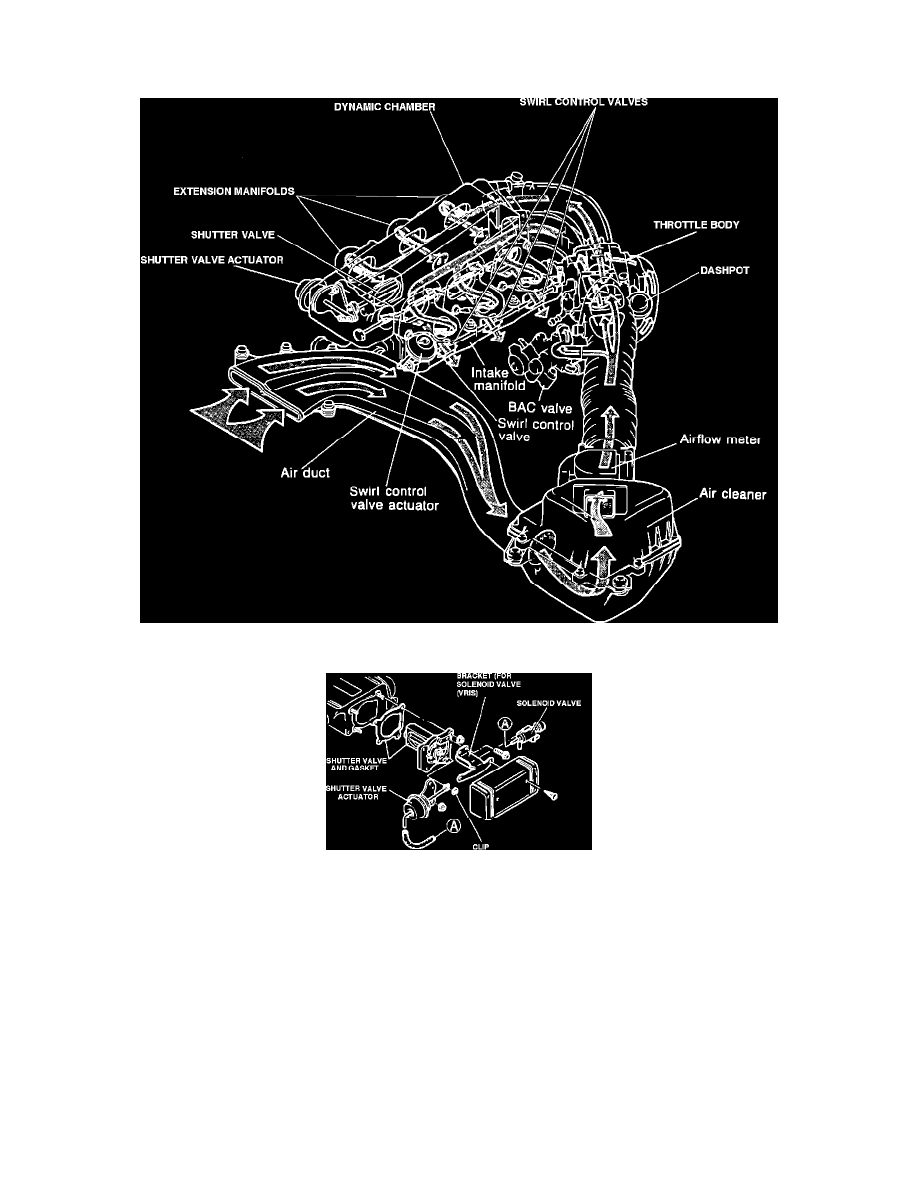929 V6-3.0L SOHC (1989)

Variable Induction Control Valve: Description and Operation
Variable Resonance Induction System (VRIS)
Intake Air System
Shutter Valve Assembly
The shutter valve, located on the front of the dynamic chamber of the intake manifold, is part of the "Variable Resonance Induction System" (VRIS). The
shutter valve consists of a vacuum diaphragm and spring, and a plate valve similar to a throttle valve. Vacuum is applied to the diaphragm through a
computer operated vacuum solenoid valve.
At different engine speeds, areas of high and low pressure oscillate through the intake manifold at different harmonic frequencies, due to the opening and
closing of the intake valves. The VRIS takes advantage of this by changing the effective volume of the dynamic chamber of the intake manifold, thereby
changing the frequency of the oscillations. This helps synchronize the occurance of a high pressure area at the valves with the valve timing, while air
inside the intake runners still has momentum and velocity towards the valves as they are opening.
When an intake valve opens, high pressure air rushes into the cylinder followed by high velocity air from the intake runner, to help "pack" the cylinder
with more air and fuel before the valve closes. This helps the engine produce more torque across a broader rpm range. When the dynamic chamber
volume is large, air in the manifold oscillates at a low frequency. This helps improve volumetric efficiency at low rpm, and corresponds to the shutter
valve being open. When the dynamic chamber volume is small, the air oscillates at a higher frequency. This is effective at high rpm, and corresponds to
the shutter valve being closed.
